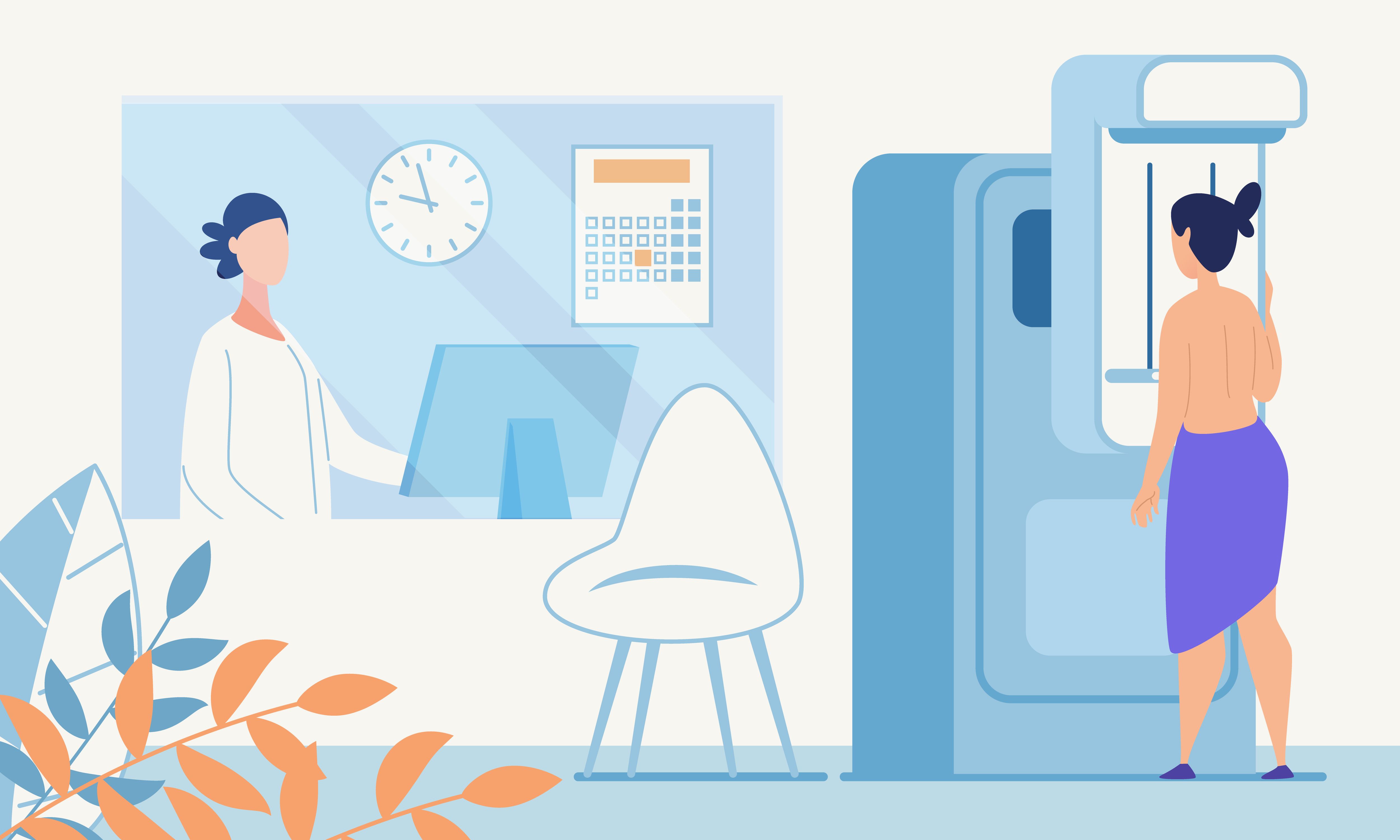News
Article
COVID-19 Disrupted Breast Cancer Screenings, Exacerbated Disparities
Author(s):
The COVID-19 pandemic disrupted breast cancer screenings, leading to decreased follow-up rates and widening health disparities.
The COVID-19 pandemic disrupted breast cancer screenings, leading to decreased follow-up rates and widening health disparities. | Image Credit: TeraVector - stock.adobe.com

During the COVID-19 pandemic, breast cancer screening decreased significantly and negatively affected follow-up screening, leading to exacerbated gaps in adherence, especially among vulnerable populations, according to Annals of Family Medicine.1
Breast cancer is the second most common cancer among women living in the US, with every 1 in 8 women developing invasive breast cancer in their life. According to the American Cancer Society, women should have the option of receiving an annual breast cancer screening between 40 and 44 years and by 45 years, they are recommended to receive annual mammograms.2
Similarly, the US Preventive Services Task Force now recommends routine mammograms starting at age 40 years, shifting from previous guidelines that emphasized shared decision-making with patients.3 This change aims to increase early detection and improve breast cancer outcomes.
Breast cancer screening disparities persist among various populations due to factors such as insurance coverage, cultural barriers, limited knowledge, fear, logistical challenges, and individual circumstances.4 Addressing these inequities is crucial for improving breast cancer outcomes.
The global COVID-19 pandemic resulted in a widespread decline in people who sought health care services, especially breast cancer screenings, based on a temporary suspension of screening programs due to concerns about virus exposure and the burden on the health care system.1
A retrospective cohort study examined women eligible for breast cancer screenings from January 1, 2017, through February 28, 2022. Researchers compiled data of monthly screening volume and adherence rates to follow-up screenings and compared the rates before the COVID-19 pandemic and after it started.
There were 1,186,669 women who met the inclusion criteria during the study period with a median age of 54.8 years. The majority of the cohort was non-Hispanic White women (50.3%), followed by non-Hispanic Black (12.9%) women, and Hispanic (7.2%) women.
The population consisted mainly of the Northeast Region (41.3%), followed by the Southern Region (30.9%). Common comorbidities included hypertension (17.9%), hyperlipidemia (14.3%), diabetes (7.6%), depression (6.9%), and hypothyroidism (6.6%).
The volume of screenings from February 2020 to March 2020 decreased sharply (35.6%), reaching a nadir by April (80.6%). By June 2020, screenings returned to pre-pandemic levels, but the rate fluctuated after.
The percentage of women who adhered to a follow-up screening decreased to 77.7% (95% CI, 77.6%-77.8%) when the follow-up was due during the COVID-19 period. The reduction of the follow-up screening rate was smaller but significant (–1.2; 95% CI, –1.3% to –1%).
The impact of COVID-19 across demographic subgroups reflected a larger decrease in follow-up observed among older age groups (–1.9%; 95% CI, –2.1% to –1.6% for those 50-64 years; –3.2%; 95% CI, –3.6% to –2.9% for those aged ≥ 65 years). Non-Hispanic women of “other” race included Asian, American Indian or Alaska Native, and Native Hawaiian or Other Pacific Islander (–4.5%; 95% CI, –5.7% to –3.4%).
In the logistic regression analysis, women were significantly less likely to adhere to a follow-up screening within 24 months during the COVID-19 pandemic compared with the pre–COVID-19 period. There was a 2.5% reduction in the likelihood of adhering to follow-up screening while the pandemic was ongoing. Younger women in racial and ethnic minority groups were least likely to have follow-up screening overall.
There were disproportionate affects from the COVID-19 pandemic on older women and those of non-Hispanic "other" race. Women aged 50 to 64 years and older than 65 years had adjusted ORs of 0.86 (95% CI, 0.85-0.87) and 0.78 (95% CI, 0.76-0.80), respectively, compared with women aged 40 to 49 years (OR 0.95, 95% CI, 0.93-0.97). Women who identified as non-Hispanic "other" race had an adjusted OR of 0.71 (95% CI, 0.67-0.76).
The study reflected consistencies of a pandemic-induced gap in breast cancer screening. While the 2.5% reduction may seem small, it implies many missed opportunities for follow-up screenings considering the scale of the population, the authors noted. It has become clearer how gaps have been exacerbated across demographic subgroups.
Study limitations include the exclusion of women who never received screening, a reliance on a fixed cohort analysis, potential coding variations in clinical data, and limited data on social determinants of health, along with geolocation.
Ultimately, the study found that existing disparities in breast cancer screening were exacerbated by the COVID-19 pandemic, particularly among older women and non-White women. While screening rates have rebounded since the peak of the pandemic, the lasting impact on these vulnerable populations underscores the urgent need for targeted interventions to improve access and adherence to breast cancer screening guidelines.
“As the full impact of the pandemic continues to play out, future studies are needed to assess its long-lasting impact on breast cancer screening and other preventive care services,” the authors concluded. “As health systems around the world start to recover from the disruptions in essential health services after 3 years of the pandemic, innovative care navigation strategies, such as focused outreach efforts, are needed to close the gap and improve the stagnant breast cancer screening rate, adherence rate, and outcomes.”
References
1. Chung A, Chen W, Curry W, Felix T, Tuan W. Breast cancer screening during the COVID-19 pandemic in the United States: results from real-world health records data. Ann Fam Med. 2024;22(3):208-214. doi:10.1370/afm.3098
2. Cancer facts for women. American Cancer Society. October 31, 2023. Accessed August 6, 2024. https://www.cancer.org/cancer/risk-prevention/understanding-cancer-risk/cancer-facts/cancer-facts-for-women.html#:~:text=Breast%20cancer%20is%20the%20most
3. Recommendation: breast cancer screening. United States Preventive Services Task Force. April 30, 2024. Accessed August 6, 2024. https://www.uspreventiveservicestaskforce.org/uspstf/recommendation/breast-cancer-screening#:~:text=What%20is%20the%20Task%20Force
4. How do breast cancer screening rates compare among different groups in the US? Susan G Komen. May 29, 2024. Accessed August 6, 2024. https://www.komen.org/breast-cancer/screening/screening-disparities/#:~:text=In%202021%20(most%20recent%20data%20available)%2C%20Hispanic%20women%20had,Figure%203.6)%20%5B162%5D
Newsletter
Stay ahead of policy, cost, and value—subscribe to AJMC for expert insights at the intersection of clinical care and health economics.





